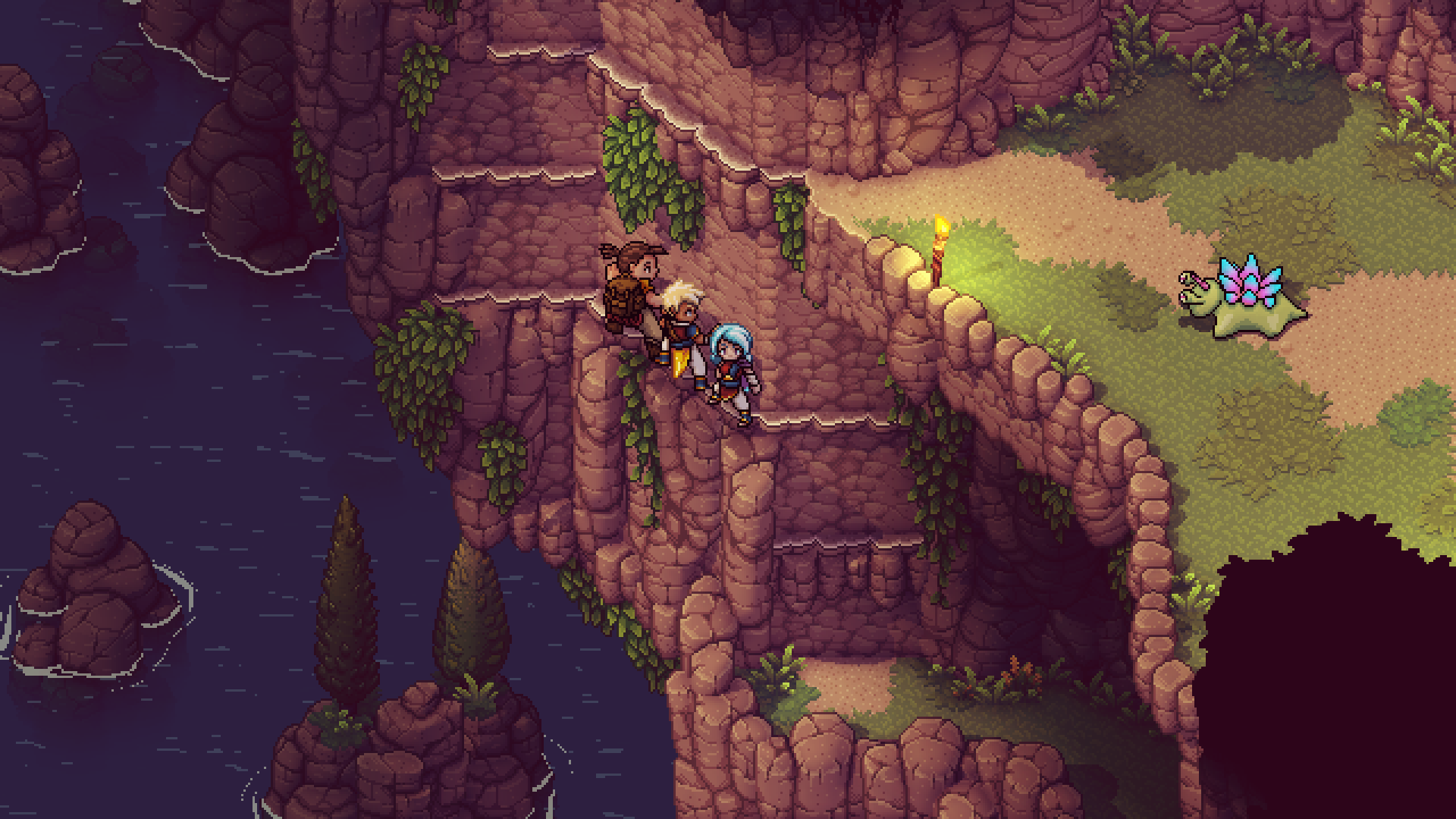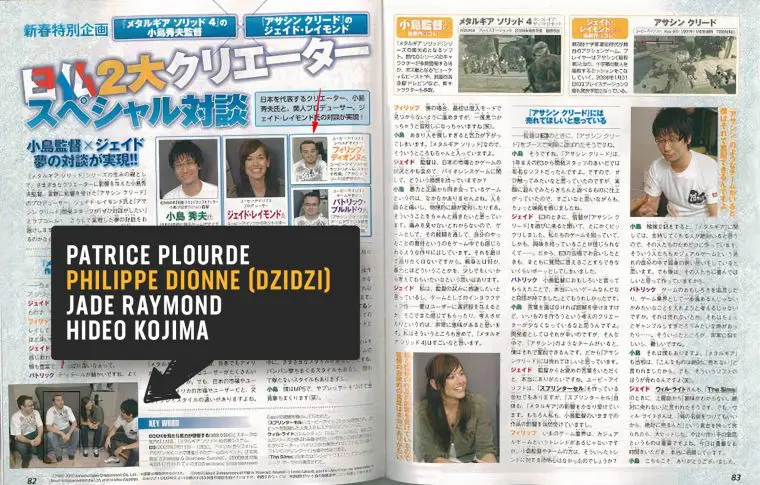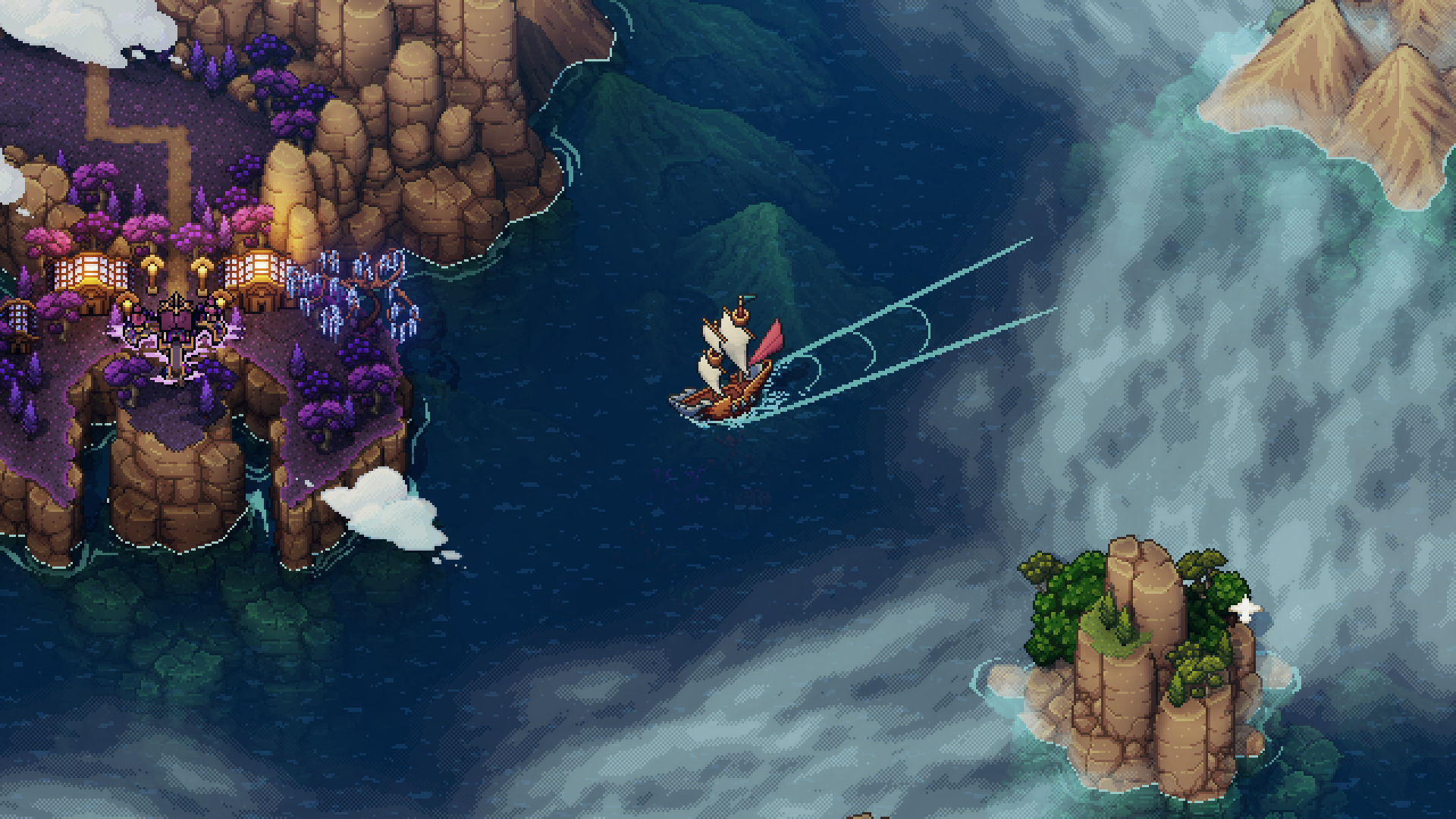
As I played through Sea of Stars, I was taken aback by how expansive the areas felt. Not in the open-world sense, to be clear, but rather, that Quebec City-based Sabotage managed to create levels that are both dense and multitiered while also feeling well-paced and breezy to get through. Often, the dungeons in the classic Japanese role-playing games that inspired Sea of Stars could feel repetitive and drag on.
“At Sabotage, the approach is, ‘Okay, let’s tackle a genre that we’ve always loved and’ — it’s a bit of a pruning process — ‘leave behind what didn’t really age well and rethink what might be better,'” explains Thierry Boulanger, Sea of Stars’ creative director. “And what we want is for a modern player who maybe is making first contact with that genre, that their experience as a modern gamer is as good as how we felt when we were nine and we’re playing those games.”
 Part of this, Boulanger says, came down to identifying genre “irritants” and trying to offer a different approach. In the case of traversal, that meant breaking away from the restrictive grid-based movement of the games of old. For example, one of the earliest levels, Coral Cascades, draws from the aesthetic of a rocky beach area in Chrono Cross but applies it to a massive cliffside that your party navigates by jumping, swimming and shimmying across ledges.
Part of this, Boulanger says, came down to identifying genre “irritants” and trying to offer a different approach. In the case of traversal, that meant breaking away from the restrictive grid-based movement of the games of old. For example, one of the earliest levels, Coral Cascades, draws from the aesthetic of a rocky beach area in Chrono Cross but applies it to a massive cliffside that your party navigates by jumping, swimming and shimmying across ledges.
“There’s a little verticality in the level design and it clashes in a way that feels like a bit of an innovation or an iteration. You’re not used to going seamlessly in and out of water like this, jumping up on things from all these angles, and all,” he says.
“I think it was Savannah [Perron], one of our animators, who said: ‘It really annoys me in games when I can kill a dragon but if there’s a fallen tree in the way, I can’t just hop over it, I have to go out of my way.’ It’s these kinds of moments where you’re like, ‘Yeah, that fits with the narrative in combat but outside of combat there’s a different set of rules.’ And we really set out to make something that would feel more seamless.”
Later in Sea of Stars, you’ll also unlock items like a grappling hook that only further open up navigation. “It feels like a game where it’s all these small pockets. It seems like we’re constantly just doing the fun part and then moving on,” Boulanger says with a laugh. “And it also seems, in turn, that makes things more bite-sized and more approachable for the player. It just feels lighter overall.”
It’s a surprisingly thoughtful approach to traversal in a JRPG-style game, but it’s one that makes sense when you understand Sea of Stars‘ lineage. As Boulanger tells it, that all stems from veteran Ubisoft Montreal developer Philippe Dionne, who worked on a few Prince of Persia titles and was even part of the initial small core team on the original Assassin’s Creed.

Dionne in a Japanese article that also features Canadian games producer Jade Raymond and Metal Gear creator Hideo Kojima. Image credit: Sabotage
“Throughout my career, I was lucky enough that we ended up at the same place. I was like, ‘I saw you on a panel with [Metal Gear creator Hideo] Kojima, I can’t believe it’s you.’ And he’s like, ‘What a nerd! That was only in a Japanese newspaper!’ I’m like, ‘let’s just skip that intro, can we be friends?'” says Boulanger, laughing. “And we’ve had this friendship for over 10 years now, and we just hang out all the time, and we play all the games. We have a very similar brain in terms of [game development]. He’s more introverted — he doesn’t want to do interviews anymore and obviously, we respect that — but I wish more people could pick his brain because he is an absolute genius.”
It also helps that Sabotage has added its own little flourishes of personality to the world. The studio’s first game, The Messenger, had a witty tone, and that extends to Sea of Stars in many ways. From the DJ-ing rocky Boulder Douche enemy and rodent people miners to a goofy pirate gang and a party member who uses a frying pot lid for a weapon, Sea of Stars injects a lot of levity into its save-the-world narrative.
“There’s a bunch of things even just from the Canadian perspective — there are a couple of self-inserts there. I try not to use the soap box too much,” he says with a laugh. “For example, in the cooking ingredients, the description of maple syrup says it’s too expensive, which I fully believe. ‘Underrated and overpriced,’ I think is how the description goes. I will die on this hill!”
He adds that there are “probably around 12 things” that are in the game that are French-Canadian nods, including “Malkomud,” an early rodent sorcerer boss that aims to evoke magic and earth while also referencing the French term for “rascal” or a mischievous person. “As you just say them out loud as an English speaker, unbeknownst to yourself speaking French-Canadian, that adds a little bit of depth to the thing you talked about. I certainly had fun with that.”
and dynamic lighting#pixelart #screenshotsaturday #indiedev #rpg pic.twitter.com/XxX4TM4Xj6
— Sea of Stars (@seaofstarsgame) November 13, 2021
But even if you can’t appreciate all of those little winks, what should catch everyone’s eye is the game’s gorgeous pixel art aesthetic. Making it even more impressive is the dynamic lighting, which sees Zale and Valere using their respective sun and moon powers to change the time of day on the fly. There are even nighttime versions of songs to accompany these shifts. Boulanger says one person, Jeakim Hamel, worked on the dynamic lighting since the very beginning of Sea of Stars‘ development in 2018.
“He was one of the first two people to work on the game because we started with that basic idea of the dynamic lighting. Because the pipeline, all of the production, all of the assets that we make have to answer to the technical needs of the dynamic lighting working out,” he explains. “And that’s been a full-time job for him for five years straight. He was polishing and fixing stuff all the way to the gold milestone about a month ago.”
Boulanger adds: “He’s a wizard — he just does magic.”
Part of making a game’s world feel alive and worth exploring, of course, also comes from adding in a variety of side content.
Note: This is where the piece shifts to significant spoilers, including the endings of Sea of Stars. Stop reading here if you haven’t beaten the game.
When you reach the final boss, you’re able to go off and do a variety of sidequests in previously inaccessible areas, including character-specific missions. But beyond that, Sea of Stars ends on a pretty open-ended note, with Zale and Valere stopping their own mentor, Erlina, but the main villain, Aephorul, gets to escape, leaving them to pursue him.
However, if you do tackle the plethora of side content — which includes secret bosses and dungeons — you can unlock the true ending. While it’s easy to see how some people might have been frustrated with a somewhat inconclusive ending, Boulanger says this wasn’t actually a concern.
 “For me, that’s another big Chrono Trigger inspiration,” he says of the decision to include an additional ending. The 1995 time-travelling Square RPG famously has a slew of different endings, which was quite novel for the time.
“For me, that’s another big Chrono Trigger inspiration,” he says of the decision to include an additional ending. The 1995 time-travelling Square RPG famously has a slew of different endings, which was quite novel for the time.
“By the endgame, you can go to the final boss whenever you want, everyone can get their ultimate weapon and all that. We absolutely had to have something like that, because it feels so good because by that time you can fly and go wherever. And so now you’re invested.”
That also meant accepting that most people are going to have that shorter ending, which includes the ever-lovable Garl remaining dead. “Let’s actually own this and then for those who actually go and complete everything, you get a very, very meaningful reward. But for some people, the game will be, ‘Well, my friend is dead, I got revenge on my mentor, but the actual bad guy was just let off the hook, and so be it.’”
It also allowed Sabotage to add a fair number of surprises to the game, like a delightful ‘Flimsy Hammer’ collectible questline that simultaneously paid tribute to The Messenger and the development team itself. “It felt right. It was super wholesome,” says Boulanger of that secret, which you can read about in full detail here.
There are also two Galaga-style “shoot ’em up” sections — one for the final monster fight in the game’s base conclusion and the climactic encounter with Aephorul in the true ending.

Image credit: DC
“You don’t expect a space shooter against a screen-wide bad guy. For phase two of the Aephorul fight, the reference I sent to [senior concept designer] Bryce [Kho] to design him to express the [on-screen] space it should take, was the old Batman logo,” says Boulanger with a laugh. “It’s like Batman’s head with the cape and it’s written ‘Batman’ inside, I was like, ‘These are exactly the proportions that we need.’ That’s a little Batman easter egg in the game.”
Sea of Stars is now available on PlayStation 4/5, Xbox One, Xbox Series X/S, Nintendo Switch, and PC. It’s also available through Xbox Game Pass and PlayStation Plus Extra and Premium.
Image credit: Sabotage Studio
MobileSyrup may earn a commission from purchases made via our links, which helps fund the journalism we provide free on our website. These links do not influence our editorial content. Support us here.


